Girih tiles are used in Islamic art and architecture to create intricate woven strapwork patterns. The underlying periodic patterns that create these designs are related to Penrose tilings and predate the formal mathematical discoveries of such tilings by at least 500 years. We needed to print hundreds of tiles to bring to the Ultimaker booth at SXSW Interactive, so the printing was split up between four printers: an Ultimaker 2+, an Ultimaker 2, an Ultimaker 2Go, and an Ultimaker 2 Extended+. To make the most interactive model we printed the tiles, strapwork, and mosaic pieces separately and in different colors:
The tiling pattern in the photo is rotationally symmetric. On the left are the basic colorful tile shapes. Towards the middle we have started to add the overlaid strapwork, which is completely determined by the tiles. On the right, we added gray mosaic tiles to obscure the original tiles and reveal the strapwork pattern.
How to make Girih tiles
You can create your own Girih designs with these 3D-printable tiles, strapwork lines, and mosaic pieces, in three steps.
- Step 1: Make a tesselating pattern with the five basic tile shapes – pentagons, decagons, rhombi, bowties, and irregular hexagons. Get the 3D printable files at our Thingiverse page.
- Step 2: Each tile determines a strapwork pattern that passes through the midpoints of its edges. These strapwork patterns match up across all the tiles to make a woven design.
- Step 3: Cover up the original tiling by placing mosaic pieces between the strapwork lines to reveal a beautiful Girih design.
Learn more about Girih tiles
Basic information
- Girih Tiles, from Wikipedia
- Girih, from Wikipedia
- Girih Tile Math, from the blog “it’s a clean machine”
Online Girih pattern construction apps
Books about Girih tilings and Islamic art
- Islamic Geometric Patterns, by Eric Broug
- Islamic Design: A Genius for Geometry, by Daud Sutton
Upper-level articles and resources
- Ancient Islamic Penrose Tiles, Science News 3/1/2007
- Medieval Islamic tiling reveals mathematical savvy, by New Scientist 2/22/2007
- Decagonal and Quasi-Crystalline Tilings in Medieval Islamic Architecture, by Peter J. Lu and Paul J. Steinhardt, Science 2/23/2007
- 1-hour lecture on Decagonal and Quasicrystalline Tilings in Medieval Islamic Architecture, by Peter J. Lu
——————
As an Amazon Associate we earn from qualifying purchases, so if you’ve got something you need to pick up anyway, going to Amazon through this link will help us keep Hacktastic running. Thanks! :)
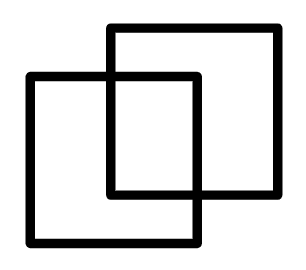
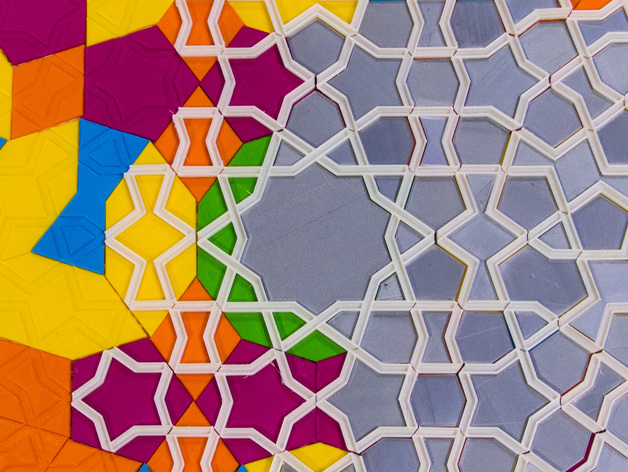
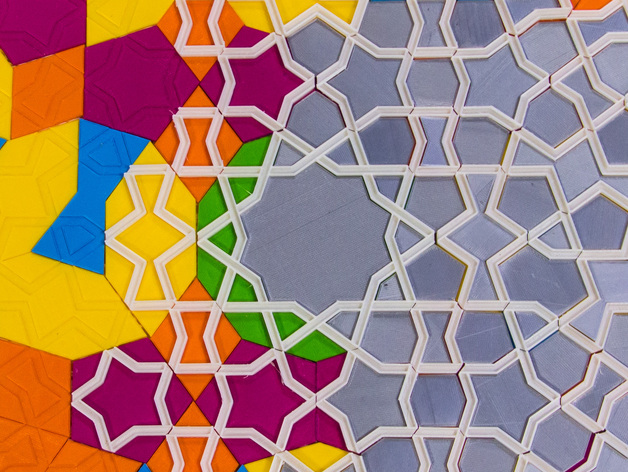
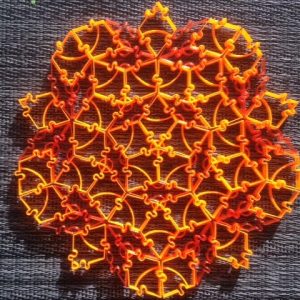
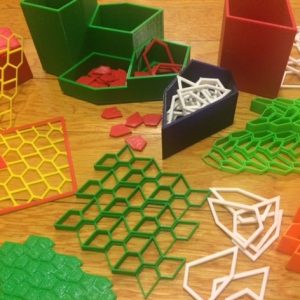
This is really cool! I had been aware of the informal association between Islamic art and Penrose tiles, but until seeing Peter Lu’s YouTube lecture last night, I did not realize how firmly the connection was established. I’m surprised these are not better known and even turned into a commercial product (or maybe they are and I have just been out of touch for the past ten years).
Thanks for collecting all these links together. Maybe I need to make or obtain a set of these.